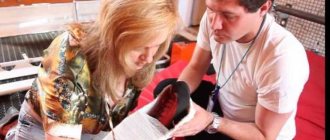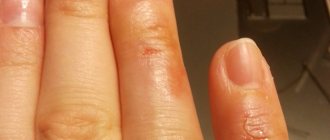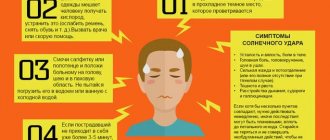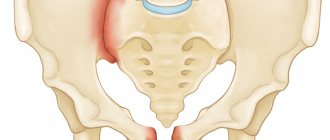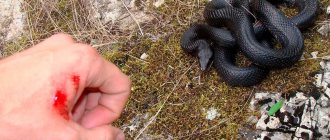Rat poisoning in humans is rare. Typically, such poisonings occur in children or adults as a result of a suicide attempt.
Source: depositphotos.com
In the fight against a large population of rodents (rats, mice), biological methods are often ineffective, and there is a need to use chemicals, which include rat poison (rodenticide). It is widely used not only in agriculture, but also in everyday life. There are several groups of rodenticides that differ in the mechanism of toxic action on the rodent body. Currently, the most commonly used rat poisons are those based on zoocoumarins.
How does poisoning occur?
Zookoumarins are anticoagulants, that is, substances that prevent blood clotting. Anticoagulants disrupt the metabolism of vitamin K in the liver. Vitamin K plays an important role in the synthesis of coagulation factors VII, IX, X and prothrombin, the insufficient content or absence of which does not allow the formation of a blood clot (thrombus). All this leads to the development of hemorrhagic syndrome (massive bleeding).
Anticoagulants from rat poison are quickly and almost completely absorbed when taken orally, their maximum concentration in plasma is observed after 3 hours.
Accidental poisoning of people with rat poison is rare, since for the development of intoxication a person must ingest a sufficiently large dose of poison orally. Typically, such poisonings occur as a result of suicide attempts or in children.
Infection with cadaveric poison
It is quite difficult to become infected with cadaveric poison in modern conditions. In the Middle Ages, infection with cadaveric poisons occurred faster and more often. So, archers often applied poison to their arrows, extracting the liquid from a dead body, they soaked the arrows in it and sent them at the enemy. A person wounded by such an arrow died in terrible agony within 1-2 days. The wound site swelled and began to fester; the result of poisoning was general blood poisoning and subsequent death. If handled carelessly with arrows, the archer himself could die. For this, only a small wound on the body, left by any sharp object, was enough.
How can you get infected?
The poison affects the body through cracks, bites, and small puncture wounds. It is impossible to become infected with cadaveric poison through a large wound, just as it is impossible to die from the fact that a small amount of poison got into a body of water, and subsequently into the stomach. As mentioned above, the only danger is a large amount of cadaveric poison. The body copes with small doses on its own.
And yet, in ancient times they believed that it was the entry of a decomposing corpse of an animal or a person into a reservoir that caused the death of livestock and the death of people. In most cases, the cause of death was cholera, the bacterium that causes botulism, or any other infection caused by decay processes.
In the Middle Ages, corpses in the river scared away enemies, forcing them to move to a new place in search of clean water. In fact, the current quickly carried away all the pathogenic bacteria, and the only danger was the place where the body was found. Superstitious people who do not understand poisons did not understand this.
If we are talking about closed reservoirs - wells, lakes, ponds. Having discovered the corpse of an animal in such a reservoir, modern epidemiologists disinfect the water and prohibit it from being consumed unless it has been boiled.
It is impossible to become infected after contact with a pathologist; the poison is not airborne or transmitted through mucous membranes.
Symptoms of poisoning
Signs of rat poison poisoning:
- intense headache;
- pallor of the mucous membranes and skin;
- nose bleed;
- bleeding from the gums;
- the appearance of blood in the urine (hematuria);
- gastrointestinal bleeding, which is manifested by vomiting “coffee grounds”, black tarry stools (with severe bleeding, there may be an admixture of fresh blood in the stool and vomit);
- tachycardia;
- decreased blood pressure;
- dizziness;
- severe weakness;
- apathy;
- lack of appetite.
The more severe the poisoning, the more pronounced its symptoms will be.
Source: depositphotos.com
Consequences and complications of poisoning
Poisoning with acids and alkalis is a serious pathology. It manifests itself in numerous and severe consequences.
Complications of poisoning with burning substances include:
- If these substances come into contact with the mucous membrane of the eyes, a person may go blind. There is also a persistent decrease in vision;
- Damage to the vocal cords . In this case, the patient may remain mute for the rest of his life;
- Changing the configuration of the esophagus . As a result of the burn, voluminous scars form on the mucous membrane. They prevent the free passage of the food bolus through the esophagus. In this case, there is a violation of swallowing. In severe cases, the lumen of the esophagus narrows significantly, which requires surgical intervention (esophageal plastic surgery);
- Liver damage, chronic jaundice;
- Cosmetic defect of the skin on the face. Both minor scars and extensive keloid scars may remain.
In severe cases, poisoning with acids and alkalis is fatal. Moreover, death can occur before the arrival of doctors or during transportation to the hospital. This is due to the severity of the injuries received.
Subsequently, many victims remain disabled. Their usual way of life is disrupted.
First aid for rat poisoning
The first thing to do is call an ambulance , and only then should you begin providing first aid.
to perform gastric lavage as soon as possible . This procedure allows you to remove part of the toxic substance from the body to prevent its further absorption and thereby reduce the severity of hemorrhagic syndrome. To lavage the stomach, the victim is given 0.5–1.5 liters of warm water to drink, after which, irritating the root of the tongue, they induce vomiting. The stomach should be rinsed at least 2-3 times until the rinsing water becomes clean, free of food particles.
To inactivate the poison that has managed to penetrate the small intestine, you should take any drug with absorbent action, for example Activated carbon. The dosage depends on the person’s body weight and is 1 tablet. for every 10 kg. Before use, activated carbon should be crushed into powder and mixed with half a glass of water.
Characteristics and types of cauterizing substances
Acids and alkalis are called cauterizing substances. They are used in medicine, in the production of fertilizers, household chemicals and cosmetics, and for the disinfection of ponds. Acids are complex substances containing hydrogen atoms that can react with other substances. They are oxygen-containing and oxygen-free. The most dangerous are inorganic acids (nitric, hydrochloric, sulfuric) - they contribute to tissue necrosis and the subsequent formation of scabs, laryngeal edema, and shock caused by severe pain.
Organic substances (oxalic and acetic acids) are characterized by a less pronounced cauterizing, but more toxic effect on the body. Causes dysfunction of the kidneys and liver. Alkalis are bases that dissolve well in water. These are the well-known lime (both slaked and quicklime), ammonia, sodium hydroxide, and liquid glass.
Intoxication with alkalis is much more dangerous than the ingestion of acids into the body. This is due to the fact that alkali has the ability to reach deep layers of tissue and destroy protein structures. In case of poisoning, severe symptoms immediately appear. The degree and severity of poisoning with cauterizing poisons depend on how concentrated the substance ingested was, its dose and the general condition of the victim’s body. The lethal dose of strong acids ingested is 30–50 ml.
When is medical help needed?
Without timely medical care, one cannot count on a successful outcome, so it is necessary in any case, even if the poisoning seems not serious.
Treatment of patients with intoxication caused by rat poison is carried out in the toxicology department of the hospital, and in critical condition - in the intensive care unit.
Specific antidotes for anticoagulants contained in rat poison are synthetic analogues of vitamin K (Vikasol, Phytomenadione). They should be administered for a long time, at least 10-15 days. In case of severe poisoning, blood transfusion and/or plasma transfusion is indicated to combat bleeding.
Symptomatic therapy is also carried out, aimed at reducing the severity of signs of poisoning and maintaining the function of the affected organs.
How to protect yourself from corpse poison?
Protecting yourself from the effects of cadaveric poison is quite simple. In ordinary life, a person is unlikely to need to take any security measures, but when visiting a morgue, or a place where a deceased person has been lying for a long time, it is necessary:
- put on rubber gloves and a mask,
- check that all areas of the body are securely covered with fabric,
- If there are puncture wounds on the body, then direct contact with the decomposing corpse is best avoided.
The rooms where the deceased lay are ventilated, the floor, table, chairs and even walls are treated with water and bleach . The rag used for this is thrown away. If the room still smells like a corpse, it can be treated with an ultraviolet emitter. The poison will not harm physically healthy people, causing only mild poisoning with cadaveric poison, but for patients with a weakened immune system, it is better not to approach the dead, even to say goodbye before closing the coffin.
The poison can enter the body with food, so doctors do not recommend eating rotten or rotting meat, even if this threatens starvation. A person who eats rot will not live long in any case, for which there is a lot of evidence.
Prevention
To prevent poisoning from rat poison, you should carefully follow the instructions for its use, and also observe safety precautions not only during work, but also during storage of the toxic substance.
Rat poison should be stored out of the reach of children, preferably in a locked cabinet. When working with it, you should use personal protective equipment (respirator, change of clothes, rubber gloves).
The best and safest option for rodent control is not to use rat poison yourself, but to call a pest control specialist.
Video from YouTube on the topic of the article:
What's dangerous about this poison?
What is popularly called “cadaveric poison” is just a complex of toxic substances:
- Cadaverina. A colorless liquid resulting from the decomposition of proteins. In small doses, cadaverine does not pose a threat to life; a dose of 2 thousand milligrams is considered fatal. The substance dissolves in alcohol and water, and gastric juice copes well with it. As a chemical element, cadaverine is involved in a variety of biological processes.
- Neirina. An extremely toxic substance formed as a result of the decomposition of nerve cells and endings. Poisoning also requires a fairly large dose, which is simply impossible to obtain from one corpse, which allows us to say that contact with one dead person can be considered completely safe. It is neurin that is most often called cadaveric poison.
- Putrescina. A dangerous toxic substance that is a product of the decomposition of meat and fish in the large intestine.
The listed substances are called cadaveric poison.
In itself, one decomposing corpse is not dangerous; the sweetish smell emanating from it can cause a feeling of nausea, dizziness, and vomiting, which will not have serious consequences for the body of a healthy person.
At the same time, being surrounded by decaying corpses for a long time is dangerous. It was the large number of improperly buried dead that was the reason for the invariably recurring plague epidemics in the Middle Ages and subsequent research into the dangers of cadaveric poison.
How can I help?
To alleviate the condition of the victim, first aid should be provided:
- Give plenty of fluids;
- Induce vomiting;
- Take activated carbon;
- Take a laxative.
If chemicals come into contact with your skin, wash them off with soap and water. The mucous membranes must be washed generously under running water. If the dose taken is too high, hospitalization may be required.
In the hospital, vitamin K1 is administered for 15-30 days and maintenance therapy is carried out.
If the patient's condition is very serious, the doctor gives a blood plasma transfusion to quickly restore coagulation.
Why is H2SO4 dangerous?
Sulfuric acid (H2SO4) is a liquid, colorless, oily substance that is a strong solvent. You can become poisoned by direct contact with the solution or by inhaling its vapors.
Sulfuric acid vapors have a toxic effect already at a concentration in the air of 0.008 mg/l, and a level of 0.18 mg/l is fatal to humans.
H2SO4 is actively used in our country - in industry and in everyday life:
- In the production of mineral fertilizers
- In the mining industry for ore processing
- For making dyes
- As an electrolyte in batteries
- In the textile industry
- In the oil industry
- In the food industry as an additive E 513.
They mainly use solutions with weak and medium concentrations - 10%, 32%. The use of acid with a concentration above 45% in Russia is limited and strictly controlled, since acid rain occurs due to emissions from metallurgical and chemical enterprises containing sulfur oxides.
The effect of sulfuric acid on the human body depends on the route of entry of the toxic substance into the body and its concentration. Most often, poisoning occurs due to violation of the rules for handling hazardous substances in industry and everyday life.
Complications after intoxication
Rat poison is a very serious and dangerous substance for people, the complications of which sometimes appear after a while. The most dangerous consequence is a blood clotting disorder (hemophilia).
Manifestations of hemophilia are:
- bleeding gums;
- nosebleeds;
- profuse bleeding from small cuts;
- internal bleeding.
In addition to problems with blood clotting, toxic substances negatively affect the normal functioning of the kidneys and liver.
Classification
The damage caused by nitric acid, or more precisely poisoning with nitric acid, can, in general, be grouped as follows:
- Chemical burns, which cause a depressing effect on the eyes and skin;
- Inhalation effects harmful to the human respiratory system;
- A combination of lesions that can occur simultaneously with injuries caused by the explosiveness of the nitrogen mixture.
The main neurological symptoms of poisoning include unbearable headaches, loss of strength, coughing, convulsions, and possible coma. In case of severe intoxication, the main signs of the disease will be burns of the skin and mucous membranes of a person’s eyes, as well as the onset of pulmonary edema. So, depending on the severity of the chemical burn suffered, it is customary to distinguish:
- Erythema;
- Bubble;
- Neuroses of the dermis;
- Negative consequences that are already observed outside the skin.
As was said, when saturated with toxic vapors, symptoms such as pulmonary edema are observed, inflammation and catarrh can be caused, and changes occur in the pulmonary tree. If nitric acid poisoning is chronic, then the main symptoms include the onset of failures in the functioning of the heart muscle, catarrh of the respiratory system, and disturbances in the functioning of the main filter - the liver and digestive organs.
A fairly common case is simultaneous intoxication through breathing and through the skin. The symptoms in this case are joint in nature and first aid, accordingly, is complex.
We will talk about this in more detail later. Given the increased risk of explosion, it is important to understand that poisoning with nitric acid can occur simultaneously with serious injuries. It is logical that often the combined lesion will be more severe and have final consequences for human health.

